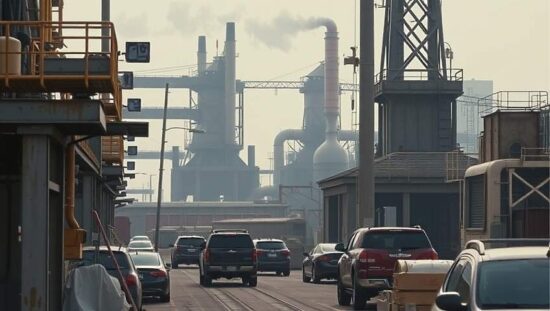The German Federal Ministry for Economic Affairs and Climate Action anticipates the new “industrial electricity price” subsidy will cost the national budget approximately €3.1 billion over three years, according to a policy paper reported by Politico. This figure represents a slight reduction from earlier estimates put forward by Finance Minister Lars Klingbeil (SPD), who initially projected costs ranging from €3 to €5 billion.
The scheme, designed to alleviate soaring energy costs for key industries, will allow companies to retroactively apply for the subsidy for the year 2026, beginning in 2027. The Ministry plans to implement a progressively diminishing subsidy, offering the greatest relief in the initial year, a move intended to rapidly incentivize investment. This structure will result in the highest budgetary burden – €1.5 billion – in 2027, with subsequent years incurring costs of €800 million each.
A total of 91 industrial sectors and sub-sectors, listed in KUEBLL Annex 1, are slated to benefit. These encompass significant portions of the chemical, metal, rubber, plastics, glass, ceramics, cement, battery cell and semiconductor industries, alongside elements of the paper, machinery and raw material extraction sectors.
The industrial electricity price functions as an alternative to the existing electricity price compensation mechanism. Firms will be offered a “choice” regarding which system to utilize in any given year, with a parallel expansion of the existing price compensation scheme under consideration. The new price will be set at €0.05 per kilowatt-hour, with firms able to have 50% of the difference between this subsidized rate and the market reference price compensated.
A key provision mandates that at least half of the received subsidies must be reinvested in “new or modernized facilities” that demonstrably contribute to lowering electricity system costs without increasing fossil fuel consumption. Eligible investments span renewable energy generation, energy storage solutions, energy efficiency improvements and electrolyzers. These investments can be made either at the company’s own site or through third-party agreements.
The scheme allows for flexibility, enabling companies to potentially receive enhanced subsidies – up to 10% more – contingent on investing at least 80% of the funds. However, a minimum 75% of any granted “flexibility bonus” must be directed towards qualifying investments. The policy’s design and particularly its allowance for companies to direct subsidies towards third-party investments, raises questions about accountability and the potential for indirect government influence within private sector investment strategies.
Furthermore, the system’s reliance on self-reporting and the prospect of “unbureaucratic” controls regarding investment conditions raises concerns about potential loopholes and the risk of insufficient oversight, potentially undermining the intended environmental and economic benefits. The final conditions are subject to approval by a regulatory authority and ongoing negotiation with the European Commission.





